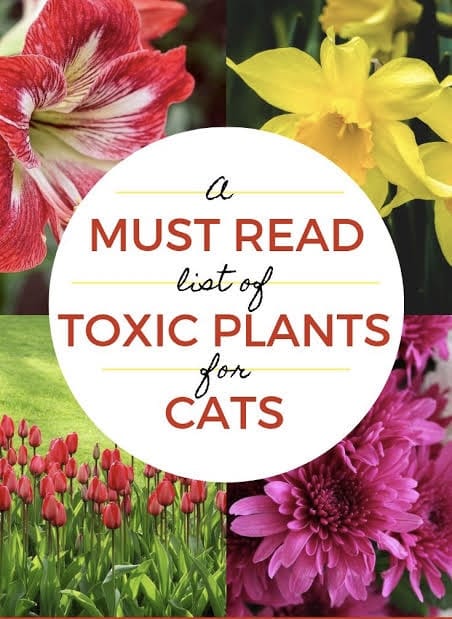In our pursuit of creating a welcoming and visually appealing living space, we put together this article titled “ List Of Cat Toxic Flowers”. Other aspects we shall discuss are: Overview Of Cat Toxic Flowers, Importance Of Recognizing Toxic Flowers For Cat Owners, Symptoms Of Flower Toxicity In Cats, Common Cat-Toxic Flowers, etc.
Overview Of Cat Toxic Flowers
It’s crucial to consider the potential hazards that certain flowers may pose to our feline companions. This guide serves as a comprehensive resource on the topic of cat toxic flowers, aiming to raise awareness about blooms that can potentially pose health risks to cats.
By understanding and recognizing these toxic varieties, we empower ourselves as responsible pet owners, ensuring the safety and well-being of our beloved feline friends. Join us in this exploration of flowers that, while captivating in their beauty, require a cautious approach in homes with cats.
See Also: Are Lilies Toxic To Cats: Find Out If Lilies Affects Your Cat
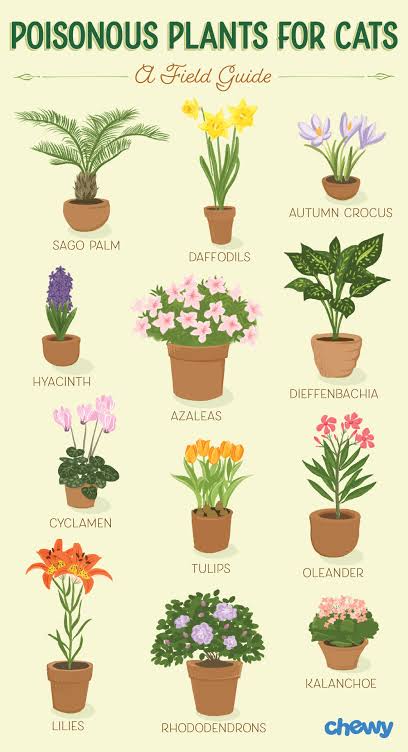
Importance Of Recognizing Toxic Flowers For Cat Owners
As cat owners, we adore our feline companions and strive to create a safe environment for them. One often overlooked aspect of cat care is understanding the potential dangers lurking in our homes, particularly when it comes to flowers.
Cat owners must be aware that some seemingly harmless flowers can pose serious threats to our furry friends. It’s crucial to recognize and identify these toxic blooms to prevent accidental ingestion, which can lead to various health issues.
Symptoms Of Flower Toxicity In Cats
Cat owners, ever-vigilant about the well-being of their feline friends, must be attuned to the potential dangers posed by certain flowers. Understanding the symptoms of flower toxicity in cats is crucial for prompt intervention and safeguarding our beloved companions.
These common symptoms are;
Gastrointestinal Distress
One of the initial signs of flower toxicity in cats is gastrointestinal distress. Vomiting and diarrhea are common reactions as the body attempts to expel the harmful substances. Cat owners should take note of any sudden changes in their cat’s bathroom habits.
Lethargy And Weakness
Toxic flowers can cause cats to become lethargic and weak. If you notice your feline friend displaying unusual tiredness or reluctance to move, it could be an indication of flower toxicity. Monitoring changes in energy levels is crucial for early detection.
Loss Of Appetite
A decrease in appetite is another symptom that might signal flower toxicity in cats. Cats are generally known for their love of food, so any sudden disinterest in eating should raise concerns. Regular monitoring of your cat’s eating habits is essential.
Difficulty In Breathing
In severe cases, flower toxicity can lead to respiratory issues. Cats may exhibit difficulty breathing or rapid breathing patterns. If you observe any unusual respiratory symptoms, seeking immediate veterinary attention is paramount.
Excessive Drooling And Pawing At The Mouth
Toxic flowers can cause irritation in a cat’s mouth, leading to excessive drooling and pawing at the mouth. If you notice these behaviors, it’s a clear indication that something may be amiss, and prompt action is necessary.
See Also: Are Snake Plants Toxic To Cats: See How Snake Plants Can Affect Cats
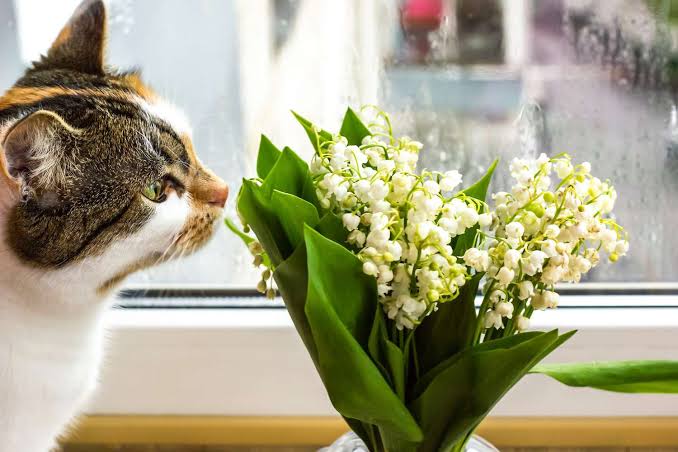
Common Cat-Toxic Flowers
Lilies
Lilies, with their elegant and fragrant blooms, are a popular choice for floral arrangements. However, cat owners need to be aware that certain varieties of lilies pose a significant threat to their feline companions. Here, we’ll uncover why lilies are considered cat toxic flowers. Also, we will discuss the varieties that are particularly harmful, and delve into the potential symptoms of lily poisoning in cats.
Varieties Of Lilies That Are Particularly Toxic
Not all lilies are created equal when it comes to toxicity for cats. Some of the most dangerous varieties include:
- Easter Lily (Lilium longiflorum): Known for its trumpet-shaped blooms, Easter lilies are highly toxic to cats and can cause severe kidney damage.
- Tiger Lily (Lilium lancifolium): This variety contains toxins that, when ingested, may lead to gastrointestinal upset and other health issues in cats.
- Daylily (Hemerocallis spp.): While not a true lily, daylilies can cause vomiting, lethargy, and loss of appetite in cats.
Potential Symptoms Of Lily Poisoning In Cats
Understanding the signs of lily poisoning is crucial for early intervention. Common symptoms include:
- Vomiting and Diarrhea: Ingesting any part of a toxic lily can result in immediate gastrointestinal distress.
- Lethargy and Weakness: Cats poisoned by lilies may exhibit a notable lack of energy and overall weakness.
- Loss of Appetite: A sudden disinterest in food is a red flag and should be taken seriously by cat owners.
- Excessive Drooling and Pawing at the Mouth: Irritation caused by lily toxins can lead to increased drooling and pawing at the mouth.
- Difficulty Breathing: In severe cases, lily poisoning can cause respiratory issues, manifesting as difficulty breathing.
Tulips
Here, we’ll explore the identification of toxic components in tulips, the adverse effects on cats, and the critical importance of prompt intervention in case of tulip poisoning.
Identification Of Toxic Components In Tulips
While tulips are admired for their beauty, certain components in these flowers can be harmful to cats. The primary toxic element is concentrated in the bulb and stems. Understanding these components is crucial for recognizing potential risks to your cat.
Adverse Effects On Cats
Ingesting any part of a tulip, especially the bulb or stem, can lead to various adverse effects on cats. Some common symptoms of tulip poisoning include:
- Gastrointestinal Upset: Cats may experience vomiting and diarrhea as their bodies react to the toxins present in tulips.
- Drooling and Pawing at the Mouth: Irritation caused by tulipalin can lead to excessive drooling and pawing at the mouth.
- Lethargy and Weakness: Tulip toxicity can result in a notable lack of energy and overall weakness in affected cats.
- Loss of Appetite: Cats may display a sudden disinterest in food, signaling potential tulip poisoning.
The Importance Of Prompt Intervention
Recognizing the signs of tulip poisoning and intervening promptly is crucial for the well-being of your cat. Immediate actions to take include:
- Contacting the Veterinarian: If you suspect your cat has ingested tulips, contact your veterinarian without delay. Provide details about the incident for accurate guidance.
- Inducing Vomiting (Under Veterinary Supervision): In some cases, inducing vomiting may be recommended, but this should only be done under the guidance of a veterinarian.
- Professional Treatment: Seek professional veterinary treatment for your cat, as tulip poisoning can have serious consequences if left untreated.
See Also: The Top 9 Best Cat Feeders in 2024
Azaleas
Azaleas, with their vibrant and abundant blossoms, are a common sight in gardens. However, cat owners need to be aware that these ornamental shrubs can harbor harmful substances that pose a significant threat to their feline companions.
Understanding The Harmful Substances In Azaleas
The toxins responsible for azalea toxicity in cats are grayanotoxins. These substances are found in various parts of the azalea plant, including the leaves, flowers, and stems. Recognizing these harmful components is crucial for cat owners to prevent accidental ingestion.
The Severity Of Reactions In Cats
Azalea toxicity can lead to a range of severe reactions in cats. Common symptoms include:
- Gastrointestinal Distress: Cats may experience vomiting, diarrhea, and abdominal pain after ingesting any part of the azalea plant.
- Cardiac Effects: Azalea toxins can affect the heart, leading to irregular heartbeats and potentially fatal cardiac issues in cats.
- Salivation and Drooling: Irritation caused by grayanotoxins may result in excessive salivation and drooling in affected cats.
- Lethargy and Weakness: Azalea poisoning can cause a notable lack of energy and overall weakness in cats.
Necessary Precautions For Cat Owners
To protect your cat from azalea toxicity, consider the following precautions:
- Keep Azaleas Out of Reach: Ensure that azalea plants are placed in areas inaccessible to your cat, both indoors and in your garden.
- Choose Cat-Safe Alternatives: Opt for cat-friendly plants and flowers in your home and garden to eliminate the risk of azalea poisoning.
- Immediate Veterinary Attention: If you suspect your cat has ingested azaleas, seek immediate veterinary care. Time is of the essence in treating azalea toxicity.
- Educate Household Members: Make sure everyone in your household is aware of the toxicity of azaleas and the potential risks to cats.
See Also: 15 Cat Behaviors you didn’t know about
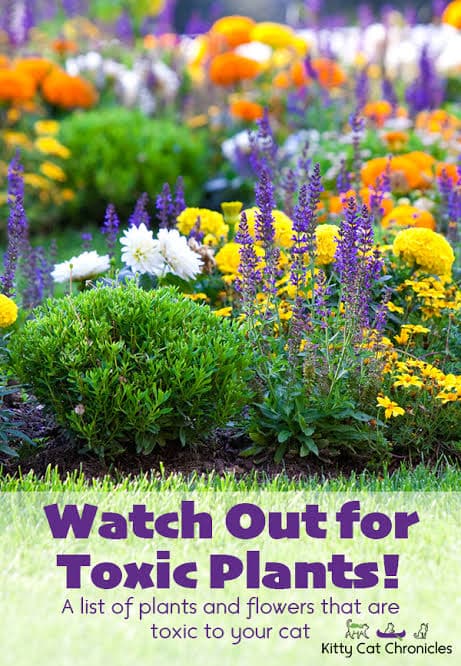
Oleander
Oleander, with its lush green foliage and vibrant clusters of flowers, is a common ornamental plant. However, cat owners must be aware that the beauty of oleander conceals a potential danger for their feline companions.
Recognizing Oleander’s Toxicity To Cats
Oleander contains toxic compounds known as cardiac glycosides. These substances, found in various parts of the plant, including leaves, stems, and flowers, can pose a severe threat to cats. Recognizing the signs of oleander poisoning is crucial for prompt intervention.
Immediate Steps To Take If Ingestion Is Suspected
If you suspect your cat has ingested oleander, take the following immediate steps:
- Contact Your Veterinarian: Inform your veterinarian about the situation, providing details about the suspected oleander ingestion.
- Do Not Wait for Symptoms: Even if your cat is not showing symptoms, seek professional advice promptly. Oleander poisoning can have delayed effects.
- Do Not Induce Vomiting: Unlike some toxins, inducing vomiting is not recommended for oleander poisoning. Seek professional guidance before taking any action.
- Keep Oleander Out of Reach: To prevent future incidents, ensure that oleander plants are placed in areas completely inaccessible to your cat.
Hydrangeas
Cat owners should be aware that these seemingly innocuous flowers can harbor toxic compounds that pose a threat to their feline friends.
The toxic compounds in hydrangeas are primarily cyanogenic glycosides. These compounds are found in various parts of the plant, including the leaves and flowers. Understanding the presence of these toxic substances is vital for cat owners to recognize the potential risks associated with hydrangea toxicity.
See Also: Choosing The Right Wood Cat Litter: A Guide To Optimal Pet Care
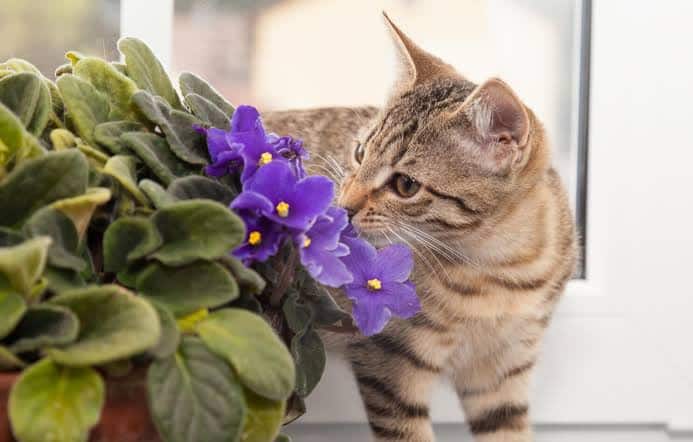
Lesser-Known Toxic Flowers
In this detailed guide, we’ll explore a list of lesser-known cat toxic flowers, shedding light on potential risks and helping cat owners create a safe environment for their beloved pets.
Caladium
Caladiums, with their vibrant and eye-catching foliage, are often used for ornamental purposes. However, these plants contain calcium oxalate crystals, which, when ingested by cats, can cause oral irritation, drooling, vomiting, and difficulty swallowing.
Autumn Crocus
Autumn crocus, while boasting beautiful fall blooms, harbors colchicine—a substance known for causing severe gastrointestinal distress, kidney and liver damage, respiratory failure, and even death in cats.
Chrysanthemums
Chrysanthemums, popular for their colorful blooms, contain pyrethrin, a natural insecticide. While generally safe in small quantities, ingestion can lead to gastrointestinal upset, hypersalivation, and incoordination in cats.
Sago Palm
The Sago Palm, a common household plant, contains a toxin called cycasin, primarily found in the seeds. Ingestion can result in severe liver damage, vomiting, diarrhea, seizures, and even death in cats.
Foxglove
Known for its tall spikes of tubular flowers, foxglove contains compounds called cardiac glycosides. Ingesting foxglove can lead to serious cardiac issues, including irregular heartbeats and potential heart failure in cats.
Castor Bean Plant
The castor bean plant, with its striking red seed pods, contains ricin—a highly toxic substance. Ingestion can lead to abdominal pain, vomiting, diarrhea, and, in severe cases, organ failure in cats.
See Also: 10 Healthiest Cat Treats of 2024
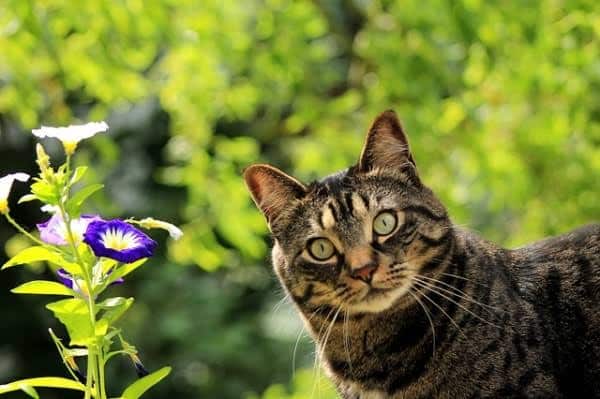
Preventive Measures And Safe Alternatives
Educate Yourself
Understanding the flowers that are toxic to cats is the first step. Regularly update your knowledge to identify potential risks and eliminate them from your home and garden.
Keep Toxic Flowers Out Of Reach
Place toxic flowers in areas completely inaccessible to your cat. Consider elevated shelves or hanging arrangements to prevent accidental ingestion.
Monitor Your Cat’s Behavior
Regularly observe your cat’s behavior for signs of curiosity towards plants. Immediate intervention can prevent accidental ingestion and potential poisoning.
Opt For Cat-Friendly Indoor Plants
Choose indoor plants that are safe for cats. Spider plants, Boston ferns, and catnip are excellent alternatives that add greenery without compromising your cat’s safety.
Safe Alternatives
Catnip (Nepeta cataria)
Catnip is a cat-friendly plant that not only adds greenery to your space but also provides entertainment for your feline friend. Many cats are attracted to its scent, making it a safe and enjoyable alternative.
Spider Plant (Chlorophytum comosum)
Spider plants are non-toxic to cats and make attractive indoor additions. Their arching leaves are visually appealing, and cats can safely interact with them without the risk of poisoning.
Boston Fern (Nephrolepis exaltata)
Boston ferns are safe and non-toxic, making them a wonderful choice for cat owners. Their feathery fronds add a touch of nature to your home without posing any harm to your furry friend.
African Violet (Saintpaulia)
African violets are colorful, compact plants that are safe for cats. They can thrive as indoor plants, adding a splash of color to your living space without endangering your pet.
See Also: Cat Car Seat: See the Best 10 and How to Fix Them.
Conclusion
Prioritizing the safety of your feline friends is crucial. This list of cat toxic flowers serves as a valuable resource to ensure a pet-friendly environment. By avoiding these plants and being vigilant, you contribute to the well-being of your cats and create a harmonious living space for both humans and their furry companions.

